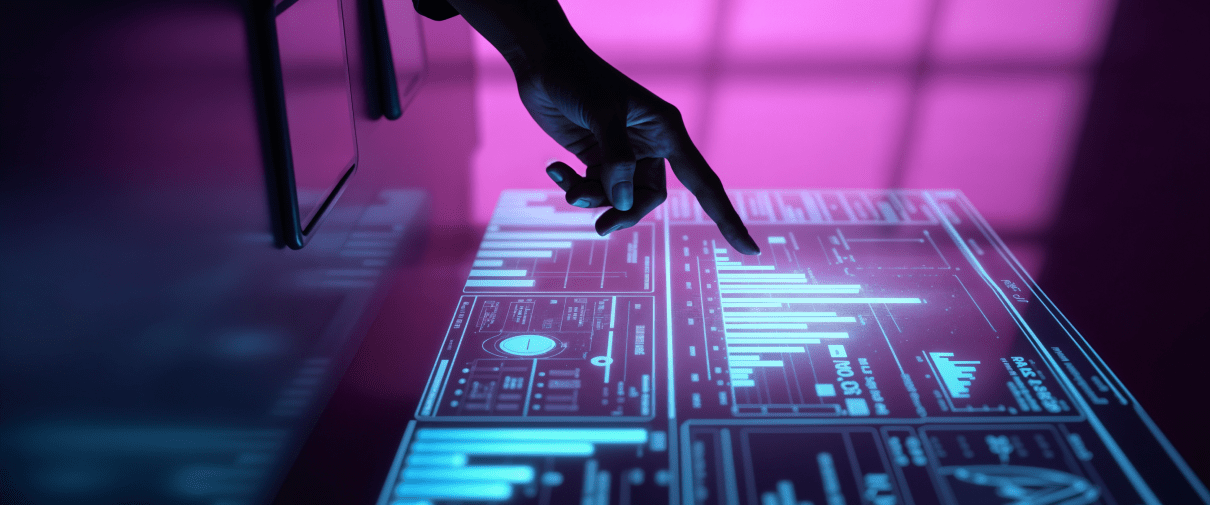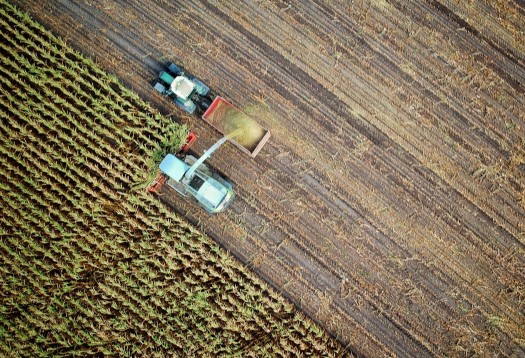Computer Vision
Look deeper and see more with the potential of Computer Vision.

Look deeper and see more with the potential of Computer Vision.
Computer vision is one of the areas of Artificial Intelligence that works with computers and systems that receive information from video, photos, and other visual data. Artificial Intelligence is the brain of the system, and Computer Vision is its eyes.
There are endless examples of Computer Vision that demonstrate its benefits and create new scaling opportunities for companies. CV has been actively used for years, and we can observe both how it works and the results of its implementation.
We are experienced in such expertise
Image Recognition
You can use Image Recognition in your business if you need to detect and analyze images that can automate certain tasks. This technology's functions include categorizing images into specific pre-defined groups of classes or types of elements characteristic of images. Based on this categorization and analysis, image recognition makes certain conclusions to solve various tasks.
Semantic Segmentation
Semantic segmentation is a computer vision technique that analyzes and classifies an image at the pixel level in order to identify objects on it. The technique tries to determine the category of each pixel in the image. That is, semantic segmentation classifies similar objects as a single class at the pixel level.
Text Recognition or OCR
If you need a solution that recognizes text in an image, Amazinum Company is ready to perform it. Text Recognition, or OCR, refers to the field of computer vision that is responsible for reading text in images, recognizing characters, and thus identifying text. Ultimately, it is converted into a machine-readable form that can be used for data processing.
Instance Segmentation
Instance segmentation is an advanced technique that classifies objects in images at the pixel level and identifies each instance of the object. Instance segmentation classifies similar types of objects into different categories. This computer vision technique uses Mask R-CNN structures, which help it distinguish between instances within classes.
Instance segmentation requires analyzing the difference between visual data with different overlapping objects and different backgrounds. Our specialists use CNN (convolutional neural networks) or ViT (Visual Transformers) for the segmentation of instances. Thanks to this, they find objects at the pixel level.
Semantic Segmentation
Face recognition is a part of object detection, but the main object here is the human face. The algorithm looks for common features and relies on unique points, such as eyes, lips, or nose, and classifies the face based on these landmarks.
There are different methods to deal with this type of task. One of the traditional methods of image processing for face recognition is the Haar cascades algorithm. On the other hand, deep learning algorithms using CNN networks show more reliable and efficient results.
There are two types of object tracking:
- Single object tracking
- Track multiple objects
Data scientists use two methods to track objects:
Generative: the system identifies the object by its distinguishing features
Discriminative: computer vision is used to distinguish the object from the background.
Face and person recognition
Object tracking is a technique used to track objects in an image or video after they have been detected. Thus, after determining the starting position, the computer in online or offline mode can predict the drift in each subsequent frame.
Why do you need Computer Vision?
Solutions
Solutions based on computer vision will help you to make supplies more efficient, track stock levels, and identify product defects or delays in the production process. In this way, you will increase the enterprise's productivity, reduce waste, and increase your profit.
customize services
Companies can use computer vision to customize their goods and services according to the tastes and actions of their customers. Both the customer experience and customer loyalty may benefit from this.
increase productivity
Computer vision has the ability to increase productivity across a range of industries by automating repetitive tasks and enhancing accuracy.
high efficiency
Computer vision has also shown its high efficiency in detecting fraud. By analyzing data from security cameras and transaction records, it can identify potential fraudsters and stop fraudulent activity by identifying trends and anomalies in the data.
automated by computer
A vast array of tasks that previously required human intervention can be automated by computer vision, including inventory management, security surveillance, and quality control in manufacturing.
Computer Vision & Business Solutions
- Retail
- Entertainment
- Education
- Banking
- Fitness and Sport
- Agriculture
- Manufacturing

Cashless stores, automated scales, and product absence sensors all optimize the work of staff and allow them to spend more time with customers.
E-commerce has used customers’ previous experiences to create personalized offers, thereby encouraging them to buy more. And these are far from all the cases that you can solve with the help of Computer Vision.

These days, computer vision is used in interactive entertainment systems to create incredibly immersive experiences. Artificial intelligence is employed by cutting-edge entertainment services to give users access to dynamic experiences.
As an illustration of how users can obtain information about what they see while looking at it, consider Google Glass and other smart eyewear. The user’s field of vision receives information directly. Users can communicate commands simply by moving their heads, thanks to these devices’ ability to react to head movements and facial expression changes.

The COVID-19 pandemic has given remote education a boost, and as a result, the education technology sector is utilizing computer vision for a range of purposes. For example, educators use computer vision tools to assess student learning in a non-obstructive manner. With the use of these tools, educators can spot disengaged pupils and modify their instruction to make surethey stay caught up.
Aside from this, Al vision is being used for tasks like regular assessments, knowledge acquisition, attendance tracking, and logistical support for schools. Computer vision-enabled webcams, which are used to monitor students during exams, are one common example of this. This facilitates the detection of unfair practices through the examination of body language andeye movements.

Computer vision has a lot to offer the financial services industry, particularly when it comes to helping with digital transformation. The following areas are where banks and other financial institutions should anticipate improvements:
- Document digitization: for quicker data extraction and processing
- Face recognition: an improved level of security and Know Your Customer support
- Damage assessment: for insurance providers, covering real estate and automobiles
Banks can use computer vision technology to generate a wealth of useful data that will help them optimize their operations and enhance customer satisfaction.

You can achieve more results and better understand each player simply by implementing performance control, intensity adjustment, and comparison of achieved results. In addition, you can track the players and the ball on the field so that the referee can make accurate statistical conclusions.

Old-fashioned methods and equipment are gradually disappearing from agricultural areas across the globe. Computer vision is being used by farmers nowadays to increase agricultural productivity. Advanced computer vision and artificial intelligence models are being developed for sowing and harvesting purposes by agriculture technology companies. These solutions can also be used for advanced weather analysis, weeding, and plant health detection.
Numerous current and future agricultural applications of computer vision include yield tracking, autonomous pesticide spraying, drone-based crop monitoring, intelligent crop sorting and classification, and automated pesticide spraying. For additional analysis, these AI-powered solutions scan the shape, color, and texture of the crops. Weather records, forestry data, and field security are also being used more and more through computer vision technology.

Manufacturing is one of the most technology-intensive processes in the modern world. Computer vision is popular in manufacturing plants and is commonly used in AI-powered inspection systems. Such systems are prevalent in R&D laboratories and warehouses and enable these facilities to operate more intelligently and effectively. For instance, predictive maintenance systems use computer vision in their inspection systems. These tools minimize machinery breakdowns and product deformities by constantly scanning the environment. If a likely breakdown or low-quality product is detected, the system notifies human personnel, allowing them to trigger further actions. Apart from this, computer vision is used by workers in packaging and quality monitoring activities.
DOMAIN EXPERTISE
With over many years of experience working with clients across the globe, our developers possess deep domain expertise in building advanced technologies for different business niches.
EDTECH
FINTECH
REAL ESTATE
HEALTHCARE
MANUFACTURING
TRADING
LOGISTIC
AUTOMOTIVE
AGRITECH
E-COOMERCE
 +49 591 319 639 50
+49 591 319 639 50  Send your request
Send your request  team@linvelo.com
team@linvelo.com 